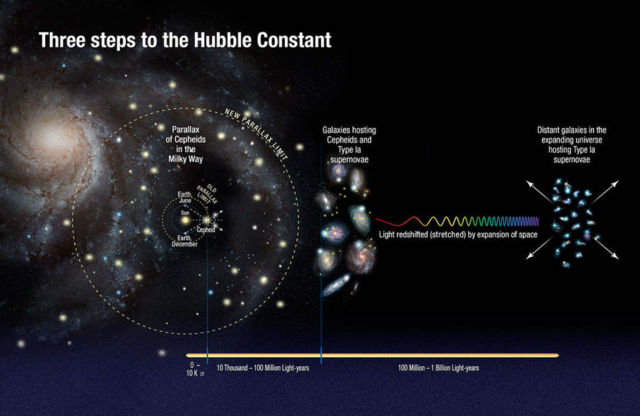Using the NASA’s Hubble Space Telescope, astronomers discovered that the universe is expanding 5 percent to 9 percent faster than expected.
Above,an illustration depicting how astronomers determine the Hubble Constant. Credit NASA, ESA, A. Feild (STScI), and A. Riess (STScI/JHU)
Study leader and Nobel Laureate Adam Riess of the Space Telescope Science Institute and The Johns Hopkins University, both in Baltimore, Maryland, explains:
“This surprising finding may be an important clue to understanding those mysterious parts of the universe that make up 95 percent of everything and don’t emit light, such as dark energy, dark matter, and dark radiation.”
The results will appear in an upcoming issue of The Astrophysical Journal.
Riess’ team made the discovery by refining the universe’s current expansion rate to unprecedented accuracy, reducing the uncertainty to only 2.4 percent. The team made the refinements by developing innovative techniques that improved the precision of distance measurements to faraway galaxies.
The team looked for galaxies containing both Cepheid stars and Type Ia supernovae. Cepheid stars pulsate at rates that correspond to their true brightness, which can be compared with their apparent brightness as seen from Earth to accurately determine their distance. Type Ia supernovae, another commonly used cosmic yardstick, are exploding stars that flare with the same brightness and are brilliant enough to be seen from relatively longer distances.
source Hubble Space Telescope






Leave A Comment